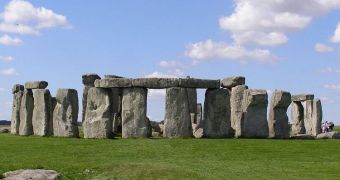After studying the ruins of Stonehenge for more than a decade, a team of experts concluded that the stone monument was built to celebrate the unification of eastern and western Britain, two regions that were previously at odds with each other.
A prolonged period of conflict and regional differences preceded this unification. Once it occurred, Britain could finally move forward with its development. The stones making up the actual monument are believed to symbolize different farming communities that established themselves in Britain early on.
This is reflected by the fact that some of the stones were traced back to southern England, whereas others were brought in from west Wales. Archaeologists from the universities of Sheffield, Manchester, Southampton, Bournemouth and University College London (UCL) were involved in the research.
They worked together as part of the Stonehenge Riverside Project (SRP), and finally managed to elucidate one of the most controversial aspects of the construction, the reason it was built.
Stonehenge was constructed between 3,000 BC and 2,500 BC. The team took into account not only the traits of the actual monument, but also the broader social and economic context of the surrounding area.
“When Stonehenge was built, there was a growing island-wide culture – the same styles of houses, pottery and other material forms were used from Orkney to the south coast,” explains University of Sheffield professor, Mike Parker.
“This was very different to the regionalism of previous centuries. Stonehenge itself was a massive undertaking, requiring the labor of thousands to move stones from as far away as west Wales, shaping them and erecting them,” he goes on to say.
According to Parker, the construction effort itself would have been a major driver of unification, since it definitely required numerous groups to come together, and pull their own weight.
The team also found that the portion of Stonehenge which is aligned with the solstice axis was built atop of naturally-occurring landscape arrangement that forms an axis between the directions of midsummer sunrise and midwinter sunset, e! Science News reports.
“When we stumbled across this extraordinary natural arrangement of the Sun's path being marked in the land, we realized that prehistoric people selected this place to build Stonehenge because of its pre-ordained significance,” Pearson adds.
“This might explain why there are eight monuments in the Stonehenge area with solstitial alignments, a number unmatched anywhere else. Perhaps they saw this place as the center of the world,” he concludes.

 14 DAY TRIAL //
14 DAY TRIAL //